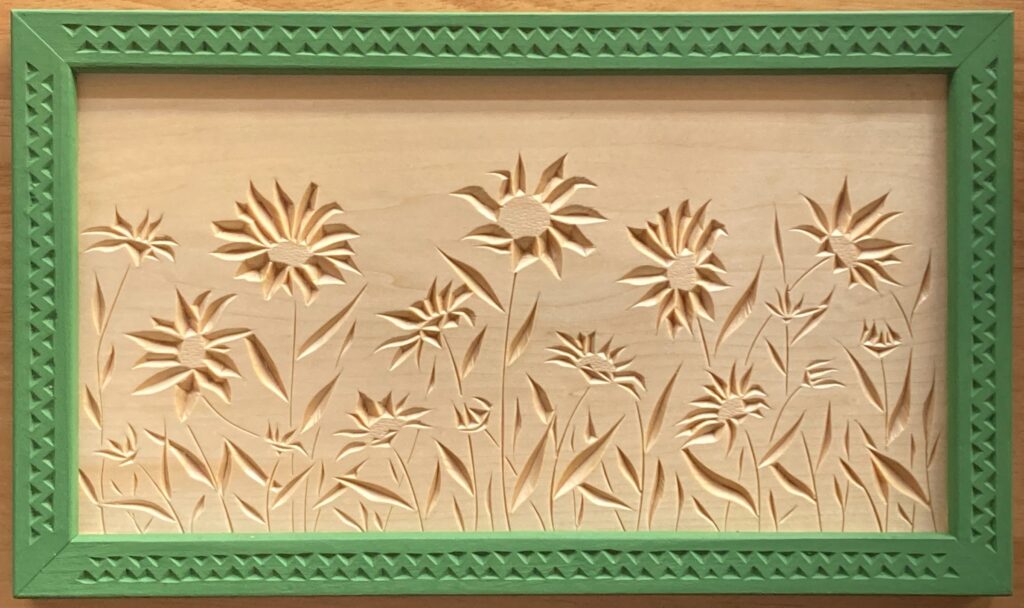
Recently, inspired by a woodcut of a field of sunflowers, I went looking for reference photos to do a carving. What interests me aesthetically about sunflowers—about any flowers, really—is their motion, the aliveness of the blossoms, the variation in form within a single species. That fits well, I find, with my chosen medium, chip carving, which allows me only crisp lines and a limited range of textures to work with. No fields of gold and green, no variation in tone, no cross-hatching, no broad swaths of anything except uncarved wood. If I don’t vary the forms, I wind up with something that looks flat.
What that means in practice is that while one perfect thing may be aesthetically pleasing, if I’m going to put several of them together, it’s their imperfections that make them visually distinct, and therefore interesting. Consider Van Gogh’s sunflowers, which as he continued to paint them grew less round, less consistently formed, their oddities and uniquenesses more exaggerated.
Now, ideally, I’d go out and find a field of sunflowers to draw. Somewhat less ideally I’d buy a bunch and stick them in a vase, as Van Gogh did. But I’m jumping the season a bit, so I went out on the internet.
Most of the photographs I found of sunflowers were remarkably similar. Even the flowers within individual photographs were remarkably similar: round, large-headed, even-petalled, face-forward. Granted that sunflowers do notoriously face the sun, granted that a photographer is likely to capture them with the sun at his back, I was unlikely to see them from multiple angles in the same shot. But why are they all so perfect?